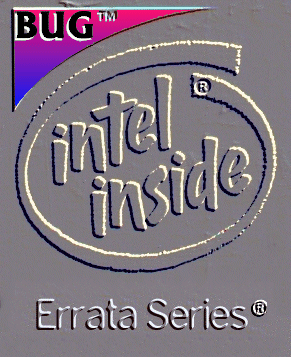BY ROBERT R. COLLINS
P54C Specification Clarification
#33
For Correct Translations, the TLB Should be Flushed After
the PSE Bit in CR4 is Set.
Memory mapping tables may be changed by setting the page size extension bit in CR4 (bit 4). However, if the TLB is not flushed after the CR4.PSE bit is set, it may provide an erroneous 4K-byte page translation rather than the new 4M-byte translation, or the other way around. Therefore, for correct translations, the TLB should be flushed by writing to CR3 after the CR4.PSE bit is set.
This will be added to the Pentium Processor Family Developer's Manual, Volume 3, Sections 10.1.3 and 11.3.5.
Who says that the Intel Secrets web site doesn't make a difference? This anomaly was first documented in my May 1996 article in Dr. Dobb's Journal entitled: Understanding 4M Page Size Extensions on the Pentium Processor. Even though the article appeared in the May 1996 edition, it was published in April, 1996 -- two months before Intel's specification update appeared.
As I mentioned in my article, I don't consider this behavior a bug, but an anomaly instead. Intel's documentation clearly states that it's the operating system's responsibility to invalidate the TLB after changes are made to paging tables, or paging structures. Modifying CR4.PSE changes in the paging translation mechanism. In essence, modifying CR4.PSE is analogous to modifying the paging structures, and is therefore covered by the caveats mentioned in Intel's documentation. Therefore, I believe that Intel made the right decision in documenting this behavior, instead of trying to fix it.
There isn't any doubt in my mind that my article brought this anomaly to Intel's attention. Even so, this should serve as a blatant reminder that big brother is always watching me.
